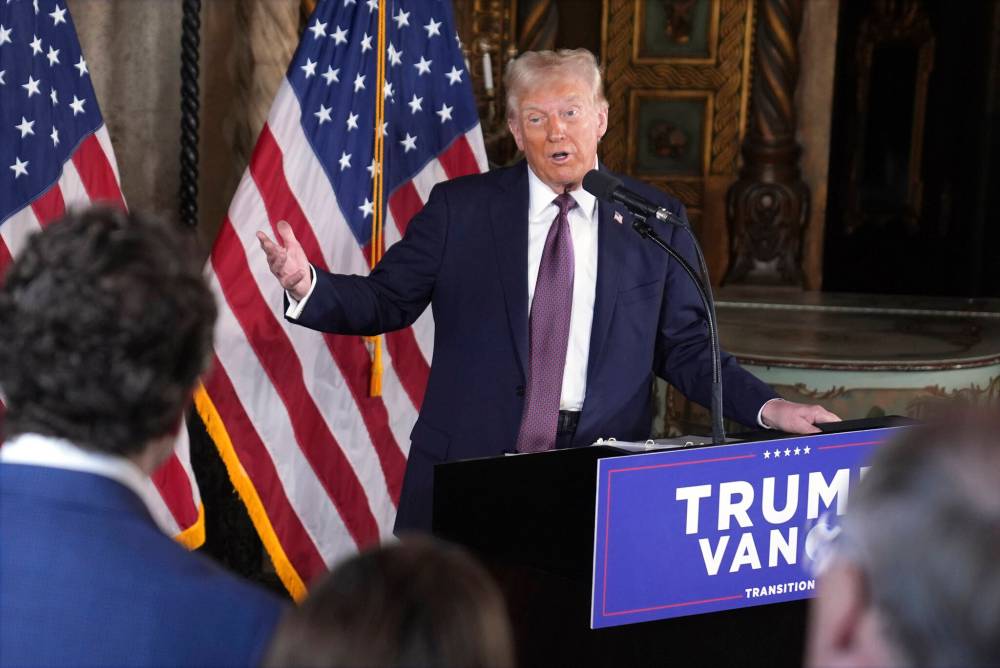What to do about Trump’s tariff and annexation threats
Advertisement
Read this article for free:
or
Already have an account? Log in here »
To continue reading, please subscribe:
Monthly Digital Subscription
$1 per week for 24 weeks*
- Enjoy unlimited reading on winnipegfreepress.com
- Read the E-Edition, our digital replica newspaper
- Access News Break, our award-winning app
- Play interactive puzzles
*Billed as $4.00 plus GST every four weeks. After 24 weeks, price increases to the regular rate of $19.00 plus GST every four weeks. Offer available to new and qualified returning subscribers only. Cancel any time.
Monthly Digital Subscription
$4.75/week*
- Enjoy unlimited reading on winnipegfreepress.com
- Read the E-Edition, our digital replica newspaper
- Access News Break, our award-winning app
- Play interactive puzzles
*Billed as $19 plus GST every four weeks. Cancel any time.
To continue reading, please subscribe:
Add Free Press access to your Brandon Sun subscription for only an additional
$1 for the first 4 weeks*
*Your next subscription payment will increase by $1.00 and you will be charged $16.99 plus GST for four weeks. After four weeks, your payment will increase to $23.99 plus GST every four weeks.
Read unlimited articles for free today:
or
Already have an account? Log in here »
Hey there, time traveller!
This article was published 10/01/2025 (291 days ago), so information in it may no longer be current.
Canadians can be forgiven for not knowing exactly how worried they should be.
For several weeks, incoming U.S. president Donald Trump has been musing about the annexation of several sovereign lands including, perhaps most remarkably, the entirety of Canada.
It all appeared to start last November during an impromptu visit by Prime Minister Justin Trudeau to Mar-a-Lago, Trump’s Florida enclave. The meeting was ostensibly to conduct casual, unofficial bilateral discussions in the wake of his stunning electoral victory. As he so often does, however, Trump grabbed headlines with a quip about making Canada the 51st state.

Since then, that quip has been portrayed more as a threat, part of a confusing and alarming plan by Trump to recast the Western Hemisphere by absorbing Canada, along with seizing the Panama Canal and Greenland.
Advice on how to greet these remarks is confused, at best.
Experts on international law, diplomacy and U.S.-Canada relations generally believe it would be impractical if not impossible for Trump to force Canada to join the United States. Still, everyone is hedging their bets.
“His statements are unserious,” said University of British Columbia political scientist Max Cameron. “But that doesn’t change the fact that we should take them seriously.”
Not serious, but still to be taken seriously? That kind of mixed message is largely why, notwithstanding the remoteness of the possibility of annexation, political leaders are responding with serious comments.
The governments of Panama and Denmark have told Trump that any union or annexation is a hard no. Even Trudeau, hot on the heels of his decision to step down as Liberal leader, said on social media that Trump’s musings don’t have a “snowball’s chance in hell.”
Why would Trump continue to float the idea of seizing other sovereign lands? As is the case with most of what he says and does, it’s about feeding the political machine that keeps Trump’s MAGA universe afloat.
Threatening other countries with annexation is effective at galvanizing the surge in support he gained during the last presidential election. What could be more MAGA than an oft-repeated fever dream about adding to U.S. territory through the not-so-gentle annexation of Canada, along with the seizure of a strategic trade asset and a large, mostly uninhabited slab of rock that lies between the Arctic and the Atlantic oceans?
As is the case with so many other Trump fever dreams, it will be the resiliency of Canadian and U.S. institutions that will ultimately determine how far he can pursue annexation. At face value, there is virtually no realistic chance of Canada either joining, or being forced to join, its neighbour to the south.
A peaceful annexation through negotiation would require approval from both Canada’s Parliament and the U.S. Congress. Legal experts who have been forced to contemplate the terms of such a co-operative union have said differences between the two countries would require years, even decades, to resolve.
Although Trump will no doubt test the limits of presidential orders, in reality, congressional super-majority approval would also be needed to launch a formal military campaign.
A more likely threat is a series of economic sanctions and restrictions to damage Canada’s economy. Trump has already threatened a blanket 25 per cent tariff on Canadian goods. These measures are not designed to force some sort of political or economic union; they are efforts to ensure trade between the two countries is designed to solely benefit the U.S.
In short, Canadians should not be concerned about being annexed or invaded. Trump does not want to own us; he simply wants to hurt us economically as much as possible. And that is reason for concern.
History
Updated on Friday, January 10, 2025 10:56 AM CST: Recasts headline






